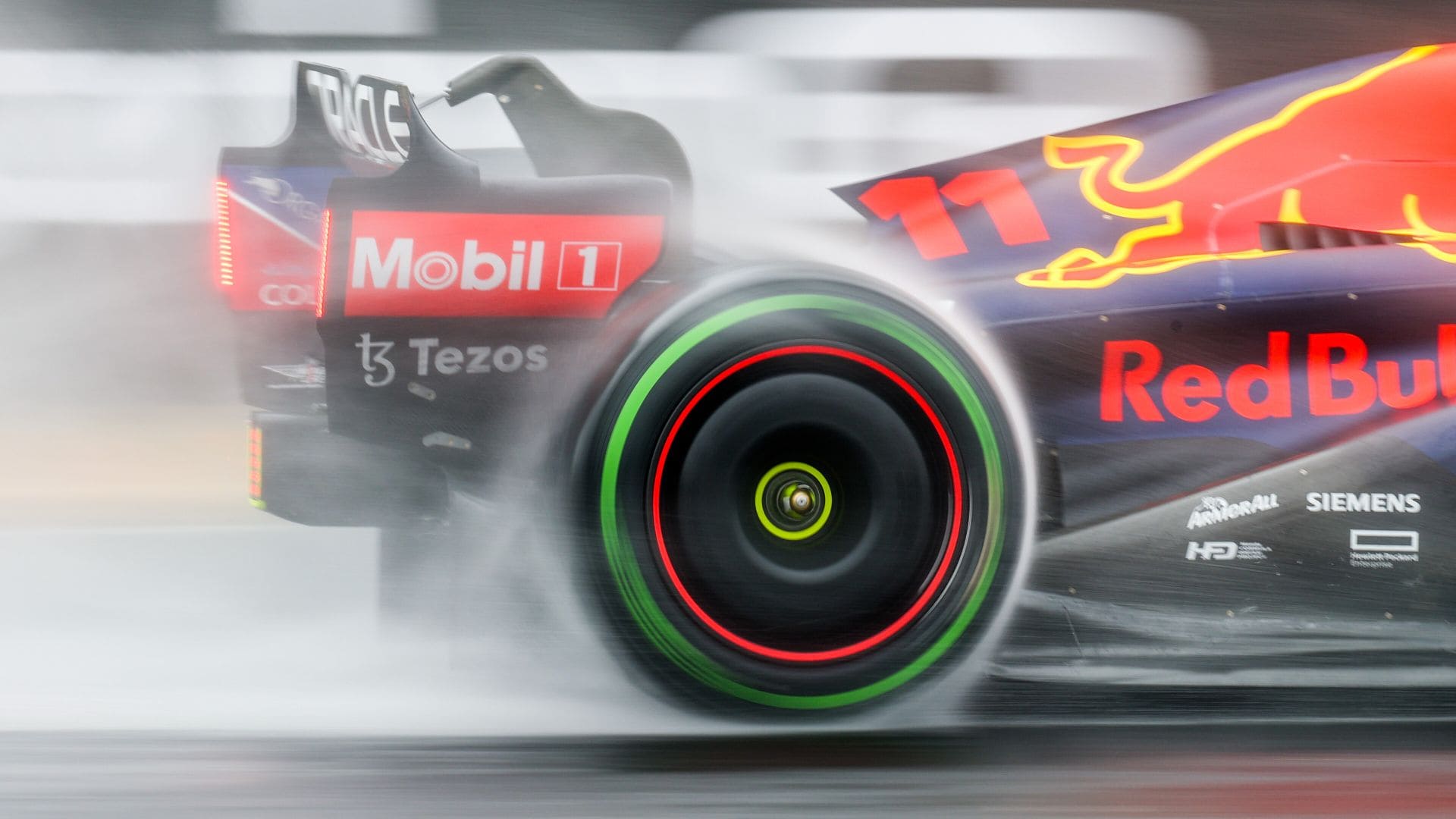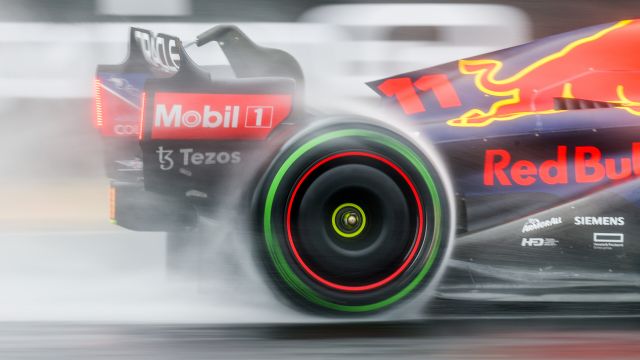What Is Aquaplaning In Formula 1?


What is aquaplaning in Formula 1? Aquaplaning, also known as hydroplaning, is a phenomenon that occurs when a layer of water builds up between the tires of a vehicle and the surface of the road. In Formula 1, this becomes a significant concern due to the high speeds at which the cars travel. When aquaplaning takes place, the tires can lose contact with the road, leading to a loss of traction that prevents drivers from effectively steering, braking, or accelerating.
In Formula 1, managing aquaplaning is critical for both safety and performance. These high-performance vehicles rely on state-of-the-art tire technology and adept driving to cope with wet conditions. During rainy weather, the tread pattern of the tires is designed to channel water away from the contact patch, the part of the tire that touches the road. However, at high speeds or in heavy rain, the volume of water can exceed the tire’s ability to disperse it, leading to aquaplaning.
Race teams meticulously monitor weather conditions and adjust their strategies to mitigate the risks of aquaplaning. Drivers must be able to quickly recognize the onset of aquaplaning to adjust their speed and driving technique accordingly. The skill and reflexes required to navigate a Formula 1 car through wet conditions highlight the complexity and challenge of racing at the highest level.
The Basics of Aquaplaning
In Formula 1, understanding aquaplaning is essential to managing races under wet conditions, where water, tyre design, and speed interplay to affect a car’s grip on the track.
Defining Aquaplaning
Aquaplaning, also known as hydroplaning, occurs when a layer of water builds between the tyres of a vehicle and the surface of the road, leading to a loss of traction. This prevents the car from responding to control inputs such as steering, braking, or accelerating.
The Physics Behind Aquaplaning
The occurrence of aquaplaning depends on multiple factors:
- Speed: As speed increases, the tyres’ ability to displace water reduces, increasing the risk of aquaplaning.
- Water Depth: Shallow water is less likely to cause aquaplaning; however, as the depth increases, the risk escalates.
- Tyre Tread Pattern: The design of the tyre tread affects the flow of water and can help minimize aquaplaning.
- Tyre Pressure: Incorrect tyre pressure can alter the shape of the tyre’s footprint and its ability to disperse water.
- Tyre Compound: The composition of the tyre affects how it interacts with water – softer compounds can provide better grip in wet conditions.
- Tread Depth: Worn tyres with shallow treads are more prone to aquaplaning due to a diminished capacity to channel water away.
Aquaplaning in Formula 1 Conditions
In Formula 1, aquaplaning presents a significant challenge, as it directly affects vehicle control and overall race dynamics, particularly during heavy rainfall.
Impact of Rain on Track Conditions
When rain hits a racetrack, it reduces grip by mixing with the rubber residue on the surface, creating a slippery layer. Heavy rain can lead to standing water on the track, a dangerous situation where water builds up faster than it can drain away. This standing water increases the risk of aquaplaning, where the F1 car’s tyres can no longer displace the water underneath them, causing them to lose direct contact with the track surface and thus, the ability to steer, brake, or accelerate effectively.
The Role of Tyres in Wet Conditions
Tyres are crucial in managing track conditions during a wet race. F1 outfits have two main types of wet weather tyres: intermediate tyres and wet tyres. Intermediate tyres are designed for light to moderate rain and a semi-wet track. They provide a balance between draining water and maintaining grip. In contrast, wet tyres have deeper grooves and are optimized for heavy rain — also known as “full wets.” These tyres can displace more water from under the tyre to combat aquaplaning. However, as the quantity of standing water increases, even the best wet tyres may struggle to maintain contact with the track, making driver skill and experience critical in these adverse conditions.
Responses to Aquaplaning in Races
When faced with wet conditions in Formula 1, responses to aquaplaning become pivotal for the safety and performance of drivers. Teams and drivers employ specific techniques and strategies to mitigate the risks associated with loss of traction.
Driver Techniques to Prevent Aquaplaning
Drivers adjust their driving patterns significantly to prevent the loss of control due to aquaplaning. One common technique includes minimizing sudden steering inputs, as smooth and gentle maneuvers maintain traction and minimize the risk of the tires gliding across the water’s surface. Additionally, drivers may choose to brake earlier than usual for corners to reduce speed progressively and avoid locking up the wheels. They are constantly adapting to the changing wet conditions, feeling for grip through the steering wheel, and listening to the engine and tire sounds for cues on how the car is interacting with the track. This sensory feedback from the car informs their decisions on throttle application and steering correction.
– Techniques Drivers Use:
- Smooth steering
- Early braking
- Throttle modulation
- Heightened sensory awareness
Team Strategies During Wet Races
Teams employ various strategies to optimize the car’s performance and ensure driver safety during wet races. One key strategic decision is the choice of a wet setup, which involves adjustments to the car’s aerodynamics, suspension, and tire choices tailored to wet conditions. The wet setup aims to increase downforce and improve water dispersal from the tires, thereby enhancing traction. Teams also constantly monitor weather conditions to make real-time decisions, such as the timing of tire changes and pit stops, to adapt to the level of wetness on the track. Efficient communication between the pit wall and the driver is vital to navigate the strategic complexities that arise due to changing track conditions.
– Team Strategies:
- Wet setup adoption
- Real-time weather analysis
- Timely tire changes
- Effective driver-team communication
What leads to aquaplaning?
Formula 1 relies greatly on its tyre technology to bring a driver and their car from the starting point to the checkered flags.
Tyres are specifically designed to provide great gripping performance so the cars can reach maximum speeds and provide the best racing experience to drivers and fans. But due to different weather conditions, teams and tyre manufacturers can only do so much in this regard.
Despite precautions and dedicated engineering, tyres are sometimes aren’t able to disperse enough water to achieve grip on the surface of a track. Levels of traction and control go down as a tyre loses contact with the ground. The loss of control over the steering due to this incident is dangerous not only to the drivers on the field but also to the spectators located near the scene.
Is aquaplaning possible when a Formula 1 car is slow?
Since Formula 1 racing is quite unpredictable, drivers can report differences in their aquaplaning experiences. The pattern of the tyres’ tread is primarily responsible for “evacuating” water out of the road’s surface in order to allow the tread pattern to make contact with the track’s surface. Aquaplaning resistance can be influenced by factors such as tire pressures, depth of water, vehicle speed, and—the most important—tread depth.
Special tyres are provided for wet racing by Pirelli—the sole tyre manufacturer and provider of Formula 1 since 2011. These tyres are able to skim through wet tracks and remain in contact with the track even at the highest of speeds.
While aquaplaning is more common at high speeds—when water can pass underneath the tyres and cause the tyres to ride on a cushion of water, possibly causing the vehicle to lose all traction—sometimes, aquaplaning can also occur at low speeds. This is why it’s important that teams observe their cars carefully during wet races. Excessively worn or underinflated tyres on already deep water can cause aquaplaning in this instance.
Is there a wet track tyre for Formula 1?
Pirelli provides the teams with three compounds out of five slick compounds and three colours at each race. The range is numbered C1, C2, C3, C4 and C5. C1 is the hardest and C5 is the softest. Additionally, as mentioned above, there are also special tyres specifically designed for wet tracks in Formula 1: Intermediate tyres and full wet tyres.
The intermediate tyres are deemed the most versatile. They work well on tracks that have no standing water and also a drying surface. At 300km/h, this tire evacuates 30 litres of water every second. As seen at several past races, the compound expands the working range, ensuring a wide crossover between wet and dry tyres.
The full wet tyres are much better options during heavy rain. When raining heavily, visibility becomes a problem rather than grip. These tyres have the ability to evacuate 85 litres of water per second per tire at 300kph. These tyres are also designed to resist aquaplaning quite well, allowing more grip during a heavy downpour.
Wet tyres are very heavily grooved and designed to provide the most reliable evacuation of water at the highest of speeds. However, as mentioned previously, there is so much these tyres can do against aquaplaning.
What is a wet setup in Formula 1?
In Formula 1, water can build up both between the tyres and track and between the car’s underbody and the track. In both cases, control over the steering wheel is lost and there is no solution to regain the control lost.
Aquaplaning however provides more risks in Formula 1 other than the loss of traction when the latter occurs. When there is water on the race track deep enough to submerge a car up to its underbody, the car is lifted off the surface of the track.
The reason for running plank so close to the ground is aerodynamic, but when there is little ground clearance, the risk of aquaplaning increases. To reduce the risk of plank aquaplaning in wet conditions, teams raise ride height further. This is referred to as a “wet setup”. The generation of the downforce under the car will, of course, be sacrificed, but in the wet aerodynamics become much less of an issue.
Did Formula 1 ever postpone a race because of heavy rain?
Formula 1 races are too expensive to cancel. This is why the tyre manufacturers of Formula 1, in the past and now, have to develop and design special tyres that will work even in the rain. However, there are moments when the weather is just too treacherous and can only threaten everyone’s safety out there in the pouring rain. During these instances, the tracks are deemed too wet and the visibility too low and the race is postponed.
This happened just last year during the 2021 Russian Grand Prix’s final practice session after torrential rain left the Sochi circuit underwater. The month before, during the race at Spa-Francorchamps, Belgium, a deluge brought the race to an abrupt end after just three minutes, with Max Verstappen (Red Bull) winning ahead of Williams’ George Russell and Lewis Hamilton. According to the rules, each driver received half points.
Which Formula 1 drivers are good at racing on wet tracks?
While skills are irrelevant once you aquaplane, there are drivers who can manage wet tracks well in general.
Among the current drivers still racing today, Lewis Hamilton—the seven-time world champion—is deemed one of the bests when it comes to racing on wet tracks. He can notch high-speed laps even in the rain. His brilliance no matter the conditions was best demonstrated during the 2020 Turkish Grand Prix, where he managed to dominate everyone on the newly resurfaced track under very wet conditions.
From the Formula 1 legends comes Ayrton Senna who illuminated the race tracks in whatever conditions. Much like Hamilton, he was an expert in keeping control of his car on slippery tracks. In fact, his first Formula 1 victory was during the 1985 Portuguese Grand Prix which was held in the rain. In the 21 wet races he ran, he won 14 of them.
Conclusion: What is aquaplaning in Formula 1?
Aquaplaning is a serious problem in Formula 1 and while Pirelli continuously designs tyres that can work even in the heaviest rain, it is still completely impossible to get rid of it completely as doing so can give rise to other issues like visibility.





